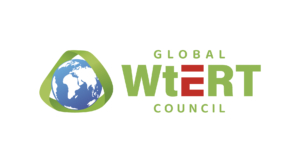The importance of landfill gas capture and utilization in the U.S.
By Patrick Sullivan, Senior Vice President, SCS engineers & EEC Research Associate
Published year: April 6, 2010
Earth Engineering Center, Columbia University
Executive Summary
According to the BioCycle/Columbia survey of municipal solid wastes (MSW), the U.S. generates nearly 400 million tons of MSW, 64% of which is landfilled. When MSW is buried in a landfill, a complex series of reactions occur in which anaerobic microorganisms decompose a portion of the organic fraction of the waste to carbon dioxide and methane. The methane produced can be collected and flared or converted to energy, which oxidizes the methane to carbon dioxide.
In its Fourth Assessment Report, the Intergovernmental Panel on Climate Change (IPCC) estimated that mitigation of methane from the world’s landfills, by means of gas collection and utilization could reduce methane emissions from landfills globally by 70 percent at negative to low costs by 2030. In effect, IPCC recommended a waste management method that is widely employed in the United States.
Unfortunately, opponents to landfill disposal too often do not differentiate between those practices that are helpful and those that are detrimental from a Climate Change perspective. When landfills are reviewed on a life-cycle basis, the negative comments from landfill opponents do not accurately portray the greenhouse gas (GHG) emissions from landfills in the United States, and data are often misused to suggest that landfills are collecting far less of the landfill gas (LFG) than actually is occurring nationwide. Recently, these opponents have urged policymakers not to support measures aiming to increase LFG capture and recovery. The main argument is that increased LFG capture makes composting less attractive than landfilling.
The United States has a very stringent level of regulation with regard to LFG and has the highest percentage of landfills with LFG collection systems relative to any other country that practices landfilling. Because of regulatory as well as other programs that promote LFG recovery and utilization, such as the Landfill Methane Outreach Program (LMOP) of the U.S. Environmental Protection Agency (USEPA), nearly 60% of the worldwide capture of methane occurs in the United States even though the U.S. only generates 24% of the worldwide methane.
Despite the progress made in capturing LFG, methane emissions from landfills can be further reduced by regulations and incentives that will result in additional LFG capture and utilization by means of:
- Improving the design and construction of the LFG collection system to improve efficiencies,
- Increasing LFG collection system efficiencies by improved cap and cover systems.
- Promotion of earlier installation of gas collection systems.
It is these types of improved control measures that should be the focus of efforts to further reduce methane emissions from landfills, including any incentives, financial or otherwise, that encourage more and earlier LFG collection as well as the beneficial use of the collected LFG to create additional GHG reductions by generating renewable energy.
Organics diversion, composting, and/or other waste management options, which are sometimes viewed as alternatives to landfills, are more properly considered as complementary waste management tools. All such practices must be judged on their own merits, including cost- effectiveness, environmental impacts and operational efficiency, and not on the back of unfounded negative statements about landfills or other management options. Progress in lowering GHG emissions is best achieved by a concerted, integrated approach that employs all available technologies and methods, including reuse, recycling, composting, waste-to-energy, and landfilling with capture of LFG.
